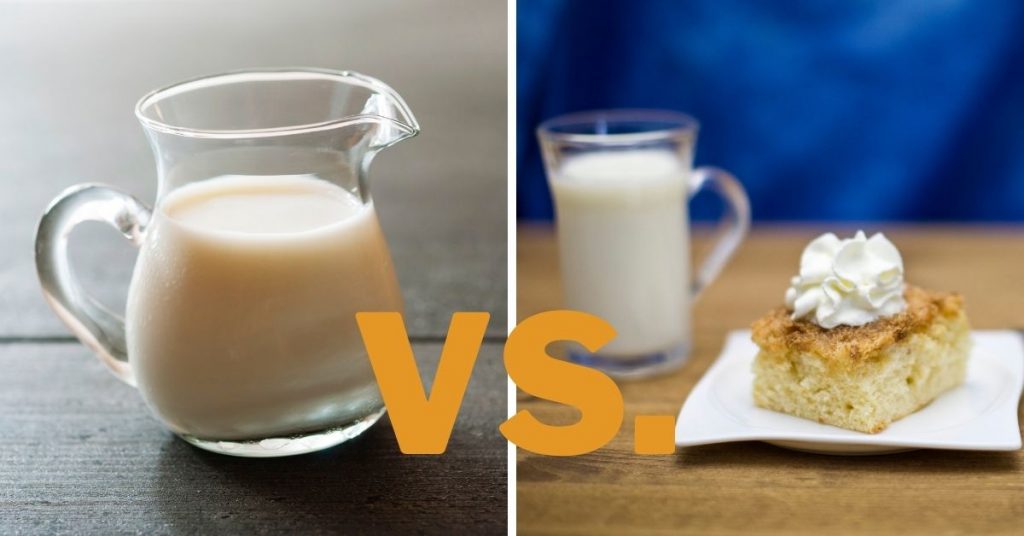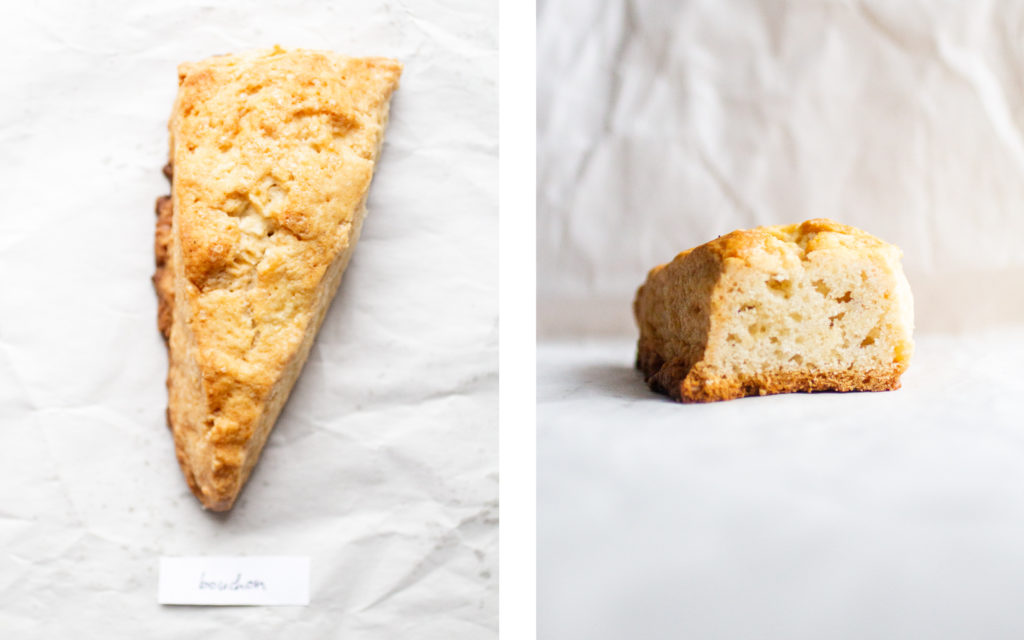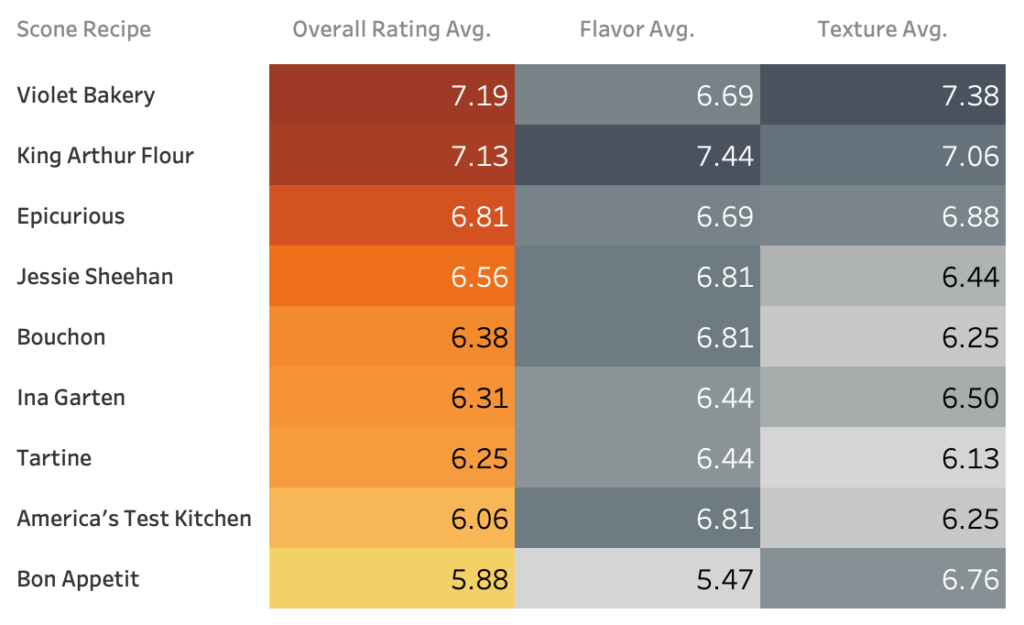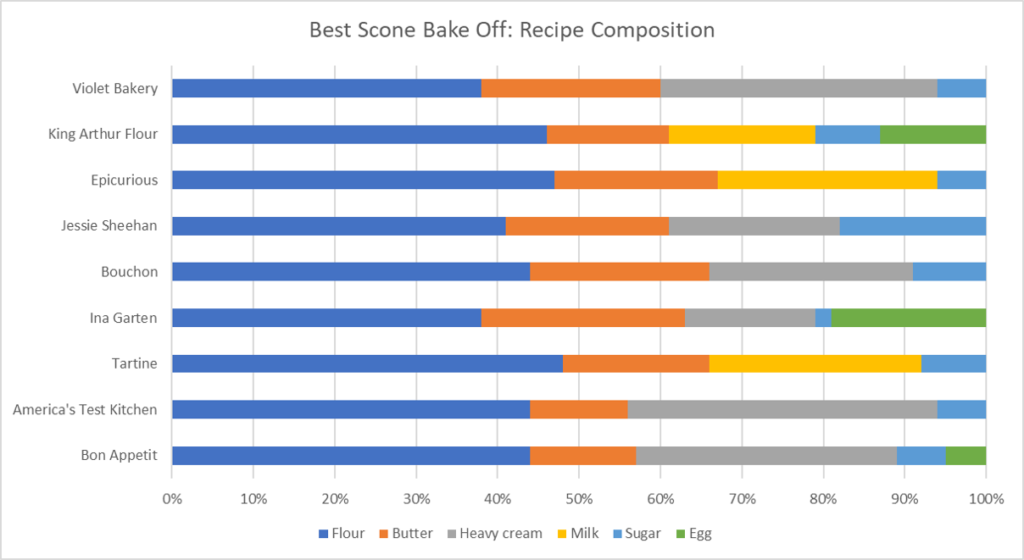Looking for the best scones to pair with jam and clotted cream? We tested 9 popular scone recipes in search of the best!
I grew up on the giant, sugar-crusted scones from Trader Joe’s, and I never ceased to be amazed at how the toaster oven could transform those soft, leaden, plastic-wrapped lumps into light and crispy slabs of craggy, buttery mouthfuls. After years of American scones, the first time I actually tried a British-style scone might have been on my trip to London last year, and it was quite a contrast in how relatively bready and less sweet they were.
In this American-style scone bake off, I was looking for a scone with the same qualities as my treasured toasted Trader Joe’s scones–crisp edges, a tender and light interior with a close, dry crumb and good flavor. This tasting was especially interesting to judge as all of my tasters have Americanized palates, and I wonder how these same scones would have fared with a different group of tasters. Read on to find out what our overall results turned out!
Heavy Cream or Buttermilk: For the best tasting pastries, stick with a thick liquid such as heavy cream or buttermilk. I usually use heavy cream, but if you want a slightly tangy flavor, use buttermilk.

Ina Garten: slightly spongy, moist scones with a more open crumb
Ina’s scones actually defy the 10 basic scone formulas–these are super high butter AND high egg. Where most scone recipes hydrate the dough with more heavy cream, she uses a slightly more modest dose of cream balanced with more egg. Accordingly, this led to eggier scones that were quite moist, soft, and a bit bready, almost spongy. With a full teaspoon of salt, the saltiness was notable (I might take it down to 3/4 or 1/2 teaspoon next time) and while there was a nice golden, glossy top, the exterior lacked any kind of crunchy crust.
Tasters praised the “good buttery savory flavor,” though some wished for a sweeter, thicker and flakier scone. Some thought this scone also leaned more biscuit than scone, almost like a “less buttery crescent roll,” an account I agree with. I didn’t prefer the egginess of these scones, but they are a great option for those who prefer moister scones.

What’s the difference between a scone and a biscuit?
This scone bake off was designed around an American-style scones (vs. British-style scones, which tend to have less butter, less sugar, and use a slightly different technique–read more about the differences here).
And so, while buried in scones, many tasters had a mini crisis of identity. WHAT IS THE DIFFERENCE BETWEEN AN (American) SCONE AND AN (American) BISCUIT?? we wondered. The ingredients are very similar and particularly when cut into a round, biscuit-like shape, we found ourselves befuddled by the differences. So below, I’ve compiled some of the apparent differences according to a few reputable sources:
- Texture: Biscuits are flaky; scones are more crumbly with a finer crumb. Biscuits are also usually moister and lighter (although British scones are a different class from American-style scones)
- Fat: According to this excellent Food52 article, the fat in biscuits is flexible but not so much in scones. Scones typically include sugar and eggs and has a more flexible shape.
- Sweetness: Scones typically include sugar whereas biscuits do not
- Temperature: Biscuits should be served hot (and tend to stale faster with no egg) vs. scones are often found warm or at room temp
- Shape: Biscuits are generally round or square; scones can be any shape but often wedges or squares
- Dairy: Buttermilk is a signature ingredient of biscuits while cream or milk is a more typical moistening ingredient in scones
- Mix ins: A scone’s finer crumbs invites more mix ins whereas biscuits are usually plain
As always, take these results with a grain of salt! These results depend heavily on a small group of American tasters who may or may not have ever had a true scone before, and also rest on the baking capabilities of an enthusiastic non-professional baker (me).
Depending on your scone preferences (dry, moist, biscuit-like, crumbly, flaky, etc.), your preferences may not align with these rankings, which is why I have an in-depth description of each scone below! As just one example, my favorite overall scone was actually the America’s Test Kitchen scone.

Most scones are composed of varying ratios of flour, butter, leaveners, sugar, some type of dairy, and sometimes egg. While I would have suspected that the recipe formulas high in overall fat (butter + heavy cream) would do better, this wasn’t necessarily the case.
This theory held true for the top scone (Violet Bakery) which had a high proportion of butter and heavy cream. However, America’s Test Kitchen and Bon Appetit had similar ratios of butter and heavy cream and scored much lower.
I also theorized that recipes that used milk instead of heavy cream (King Arthur Flour and Epicurious) would fare much worse due to less overall fat. This proved false as these recipes took second and third place. However, I think this was due more to the novel vanilla flavor in the KAF scones and perhaps the appealingly flaky texture of the Epicurious scones rather than the scone base itself.

The dairy used in the scone recipes can be broken down into four categories:
- Heavy cream (grand majority): hydrates while adding a generous amount of fat, which helps lead to tender scones.
- Whole milk: provides moisture but provides significantly less fat. Surprisingly, recipes using whole milk still performed better in this bake off compared to similar higher-fat recipes using cream.
- Buttermilk: provides moisture and tanginess. Tartine’s recipe was the only one to use buttermilk in our group, but I can’t say I really detected a difference compared to recipes that used plain milk.
- Creme fraiche/sour cream: similar to buttermilk, but obviously tends to be less runny/higher fat. The only recipe we tried that used creme fraiche was Bouchon Bakery (again, didn’t really notice a difference here–this scone seemed very similar to ATK’s cream and butter scone). Sarah Kieffer has a recipe that riffs on Ina’s scone by replacing the heavy cream with all creme fraiche which we didn’t test, but I imagine this would make for a very rich and delicious scone.
Aside from affecting the level of sweetness, sugar also affects texture. This was most evident in Jessie Sheehan’s scone, which had 18% sugar compared to an average of about 6% in other scones. This higher sugar percentage led to a cakier, more moist scone that most people enjoyed. Less sugar will lead to drier scones.
Like dairy, eggs help hydrate the dough and provide additional structure. Our results didn’t reveal any patterns on whether using eggs benefit scones or not, but anecdotally, I did not prefer the recipes that used egg (found them slightly chewier and less crumbly).
The BEST Scones Recipe
FAQ
Can you substitute heavy cream for buttermilk in scones?
What is the best raising agent for scones and why?
Does buttermilk work with scones?
Because my scones are leavened with baking powder which will work with any type of liquid. Buttermilk contains acid to make scones more moist and softer. But in recipes leavened with baking soda which requires acid to get activated to make baked goods rise, buttermilk, sour cream or yogurt is irreplaceable and milk will not work well.
Is it better to substitute full cream milk with buttermilk?
Cultured buttermilk is a fermented and tart liquid that contains active bacterial cultures, popularly called probiotics, which are essentially the beneficial microbes found naturally in our gastrointestinal system that support immunity, digestion, and nutrient absorption. Fermented dairy products that contain these microorganisms have been linked to lower risk of coronary heart disease. Both low fat and full fat versions of buttermilk fit into a health-promoting diet as a substitute for full cream milk. They produce very different results when cooking and have very different taste profiles. It may not always make sense to make this substitution. Individuals who enjoy drinking buttermilk regularly should continue to do so in the context of a healthy diet that contains a variety of fermented foods like yogurt, kimchi, tempeh, and unpasteurized sauerkraut.
Are butter scones better than cream scones?
Overall, butter scones are sturdier than cream scones. Best for: Splitting and topping with jam, butter, or cream. They can hold up to heavy or large mix-ins like chocolate chunks, roughly chopped nuts, or large dried fruit. Reason to love them: They only require ingredients you’re likely to have on hand so you can make them at a moment’s notice.
Can you substitute butter for heavy cream in a scone recipe?
Swap butter and milk for heavy cream in any basic scone recipe, so you can always bake these classic treats — no matter what kind of dairy is in your fridge. If you’re a person who faithfully plans baking ahead and always has the necessary ingredients on hand, this substitution is still worth learning. Why?
